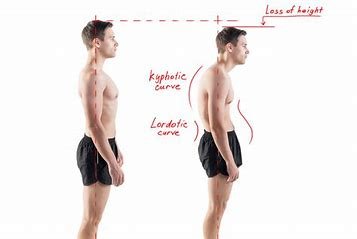
Correcting Forward Head Posture
Forward head posture (FHP) is a common postural issue where the head juts forward from its natural alignment with the spine. This can cause neck pain, tension headaches, shoulder issues, and even long-term spinal problems if left uncorrected. Here’s how to fix it step-by-step:
1. Exercises to Strengthen Neck and Upper Back Muscles
When your head leans forward, certain muscles (like those in the neck and upper back) become weak from disuse. Strengthening these muscles is key to restoring proper posture.
- Chin Tucks: This simple exercise strengthens the deep neck flexors and trains your neck to stay aligned.
- How to do it: Sit or stand up straight. Gently pull your head back so your ears align with your shoulders (like you’re giving yourself a double chin). Hold for 5–10 seconds. Repeat 10 times.
- Wall Angels: Great for activating upper back muscles like the rhomboids and traps.
- Stand with your back against a wall, arms at 90 degrees, and try to press both arms and the back of your head into the wall as you move your arms up and down like a snow angel.
- Scapular Retractions: Helps bring your shoulders back and improve upper back strength.
- Squeeze shoulder blades together and hold for a few seconds. Repeat several times a day.
2. Improving Ergonomics
Your daily environment often contributes to FHP, especially when sitting at a desk or using a phone for long periods.
- Monitor Position: Your screen should be at eye level so you don’t need to tilt your head down.
- Chair Support: Use a chair with proper lumbar and neck support, and keep your feet flat on the floor.
- Phone Habits: Avoid “text neck” by bringing your phone to eye level instead of bending your neck down.
3. Maintaining Awareness
Habitual posture changes take time. You need to constantly remind yourself to check your posture until it becomes natural.
- Use Reminders: Set alarms or sticky notes to remind you to sit/stand up straight.
- Mirror Check: Occasionally check your posture in a mirror. Is your head stacked over your shoulders?
- Posture Apps or Wearables: Devices like posture sensors or apps can alert you when you start slouching.
4. Stretching Tight Muscles
FHP tightens some muscles while weakening others. Stretching the tight areas helps relieve tension and allows your head to return to its neutral position.
- Upper Trapezius Stretch: Sit or stand tall. Tilt your head to one side and gently pull with the opposite hand for a deeper stretch.
- Levator Scapulae Stretch: Look down toward your armpit and gently pull your head forward with your hand.
- Chest Opener: Stand in a doorway, place arms at 90 degrees on the frame, and lean forward slightly to stretch tight chest muscles (pecs).
Summary
Correcting forward head posture is about consistency and balance—strengthen what’s weak, stretch what’s tight, fix your daily setup, and stay aware. Over time, your body will naturally begin to hold itself in a healthier, more aligned posture.
